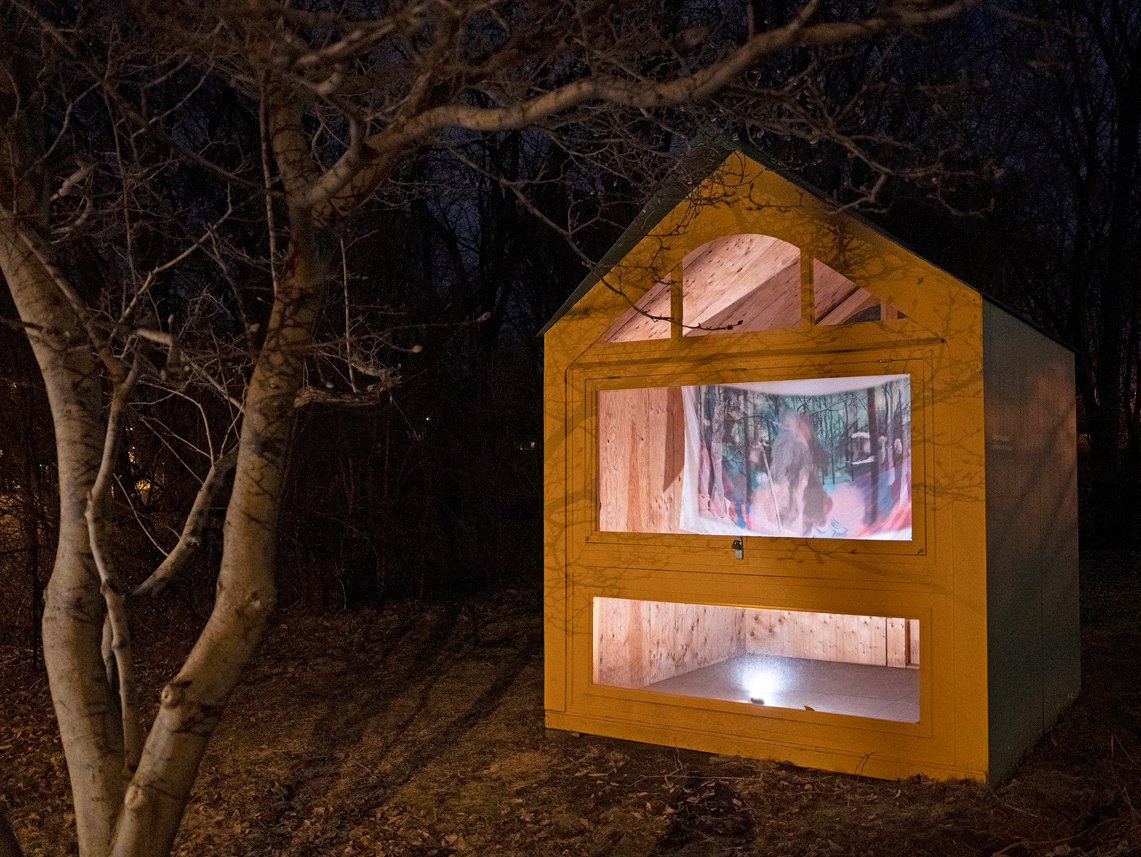In the 1980s, when Naghmeh Sharifi was a young girl in Iran, her grandmother used to tell her a folktale, called “Zar-Afshun,” about a heroine who embarks on a journey to find her prince. Though it’s morphed over time — as oral folktales are bound to do — the story has stayed with Sharifi to this day. So much so that it’s the foundation for Fading Fables (Zar-Afshun), a multimedia installation currently on display at the Art Gallery of St. Albert until August 23.
The project began as a desire Shafiri had to make a permanent record of the story her grandmother used to tell. She recorded her grandmother’s voice, marked by a stroke she suffered in her old age, as she retold the folktale.
Sharifi, who is trained as a visual artist, then planned to illustrate the story. But she found pencil and paper weren’t yielding the results she wanted. She turned to digital animation instead, using Adobe Fresco to create images to accompany the tale. As she worked — drawing, erasing and redrawing — she discovered that the software allowed her to record her process and save the animation as a time-lapse video that recorded all of her drawings, erasures and changes.
For Sharifi, the progression that the software recorded spoke to the nature of memory — the way things shift and change over time. But it also spoke to the nature of female representation in post-revolution Iran. When Sharifi was growing up, women’s bodies were hidden under chadors, which became mandatory after the Iranian revolution, or they were used as propaganda by the government and state media. Because of this, Sharifi found herself struggling to give the heroine Zar-Afshun a physical form. The artist’s process of drawing, erasing and redrawing became an act of creation that acknowledged the absence she’d grown up with.
When it came time to present the work, Sharifi decided to project the animations onto pieces of fabric hung from gallery ceilings. She chose a semi-translucent fabric so the projections could pass through the cloth, creating what she describes as a visual echo. Within a decommissioned bank vault that the gallery now uses as an exhibition space, the fabric takes on a spectral presence, reflecting the history Sharifi is working with and the role of her grandmother in the project, hovering over the work. “The softness of the fabric represents the softness of her presence in my life,” says Sharifi.
